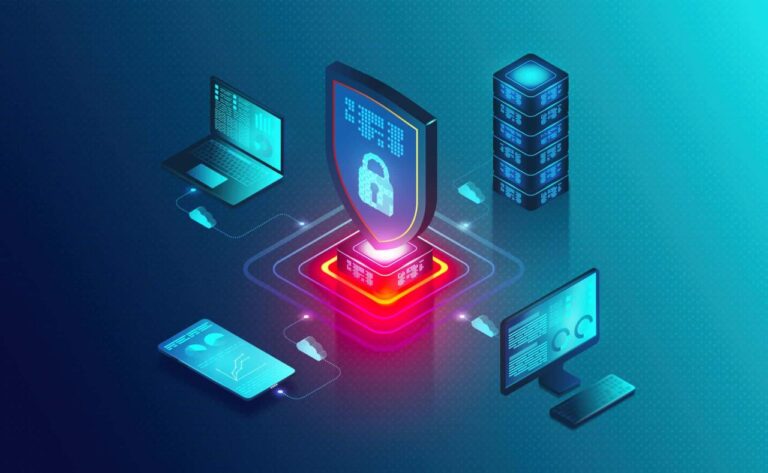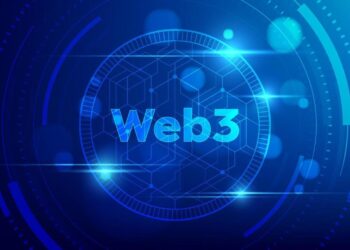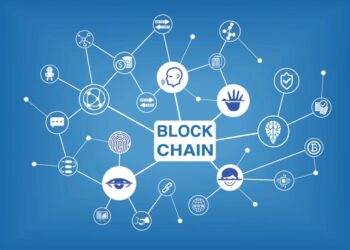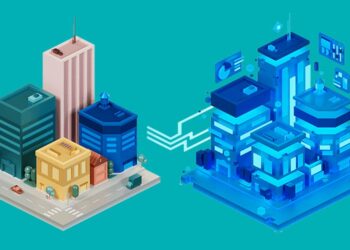In our increasingly interconnected world, where every facet of life – from personal communication to global commerce and critical infrastructure – relies on digital data, the significance of cybersecurity has never been more pronounced. It’s no longer just an IT department’s concern; it’s a fundamental pillar supporting the stability and trustworthiness of our entire digital ecosystem. As threats evolve in sophistication and scale, the ability to fortify data against malicious actors becomes paramount. This comprehensive exploration delves into the multi-layered landscape of modern cybersecurity, examining the evolving threat vectors, the cutting-edge strategies and technologies employed to defend against them, its transformative impact across industries, and the essential role every individual plays in safeguarding our shared digital future. Understanding this critical defense mechanism is vital for anyone navigating the complexities and opportunities of the 21st-century digital realm.
The Evolving Battlefield
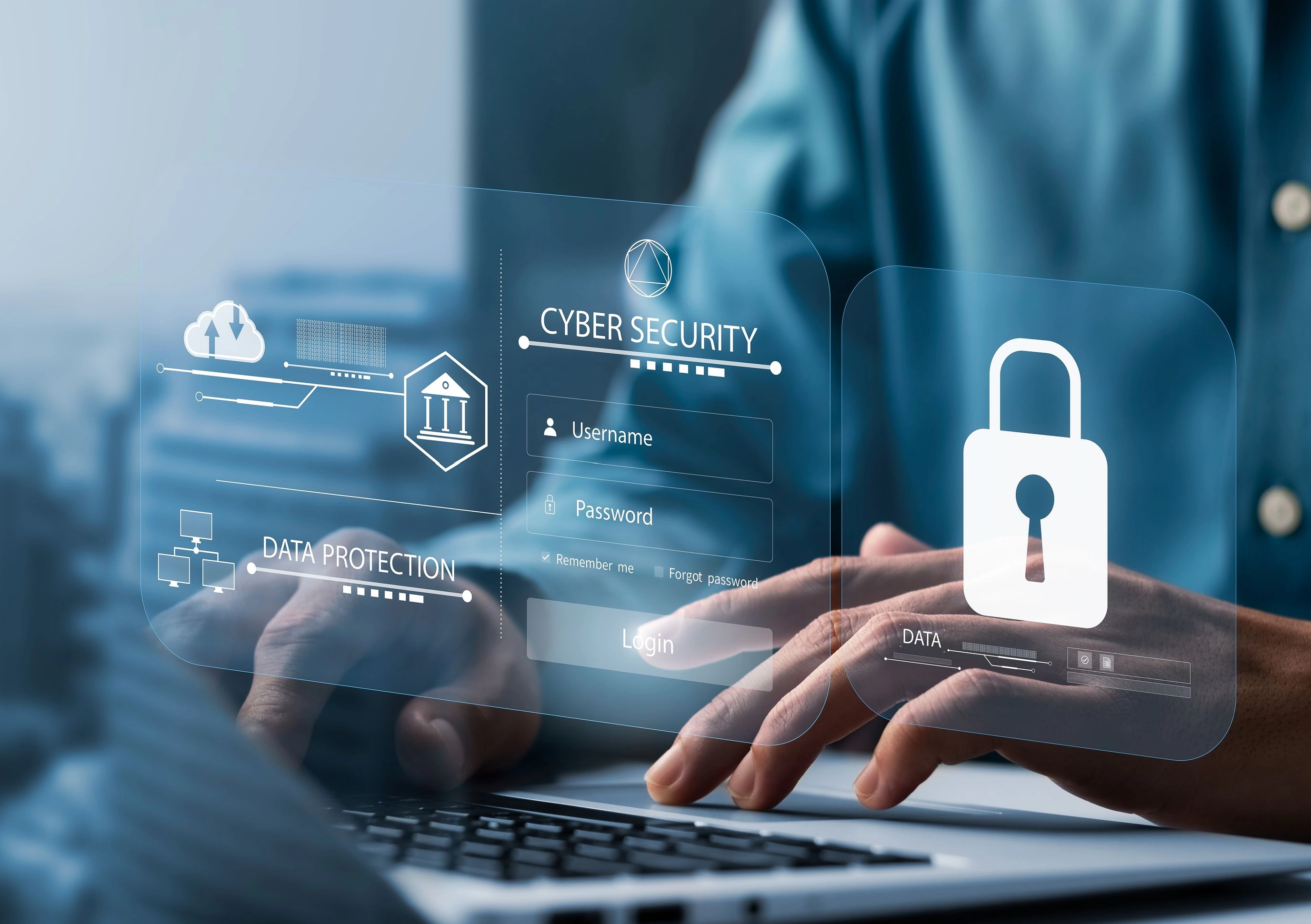
The digital landscape is a dynamic battlefield, constantly shifting as attackers innovate and defenders adapt. Recognizing the primary threats is the first step in building robust defenses.
A. Malware
Malware, short for malicious software, is a broad category encompassing various hostile, intrusive, or annoying software.
- Viruses: Attach themselves to legitimate programs and spread when those programs are executed, infecting other files.
- Worms: Self-replicating malware that spreads across networks without human intervention, often exploiting vulnerabilities.
- Trojans: Disguise themselves as legitimate software but carry a malicious payload, often creating backdoors for attackers.
- Ransomware: Encrypts a victim’s files and demands a ransom payment (usually in cryptocurrency) for their decryption. This has become a particularly lucrative and disruptive threat.
- Spyware: Secretly collects information about a user’s activity and transmits it to an attacker.
- Adware: Displays unwanted advertisements, often bundled with legitimate software.
- Rootkits: A collection of tools that allow attackers to maintain persistent, undetected access to a computer, often at a very low level of the operating system.
Malware constantly evolves, using polymorphic and metamorphic techniques to evade detection by traditional antivirus software.
B. Phishing and Social Engineering
While technical vulnerabilities are exploited, humans remain the weakest link in the security chain.
- Phishing: Deceptive attempts to trick individuals into revealing sensitive information (e.g., usernames, passwords, credit card details) by impersonating a trustworthy entity, often via email, text message (smishing), or phone call (vishing).
- Spear Phishing: Highly targeted phishing attacks aimed at specific individuals or organizations, often after extensive research on the victim.
- Whaling: A type of spear phishing attack specifically targeting high-profile individuals, such as CEOs or government officials.
- Business Email Compromise (BEC): Attackers impersonate a company executive or trusted vendor to trick employees into making fraudulent wire transfers or revealing confidential information.
- Pretexting: Creating a fabricated scenario (pretext) to manipulate a victim into divulging information or performing an action.
- Baiting: Luring victims with an enticing offer (e.g., a free download, a USB drive left in a public place) to compromise their system.
Social engineering relies on psychological manipulation rather than technical hacking, making user education a crucial defense.
C. Advanced Persistent Threats (APTs)
APTs are sophisticated, stealthy, and sustained cyberattacks often launched by nation-states or well-funded criminal organizations.
- Long-Term Goals: Unlike typical cyberattacks seeking quick gains, APTs aim for long-term infiltration and data exfiltration.
- Multi-Stage Attacks: Involve multiple phases, from initial reconnaissance and infiltration to lateral movement within the network, privilege escalation, and data exfiltration.
- Evasion Techniques: Employ advanced evasion techniques to bypass security measures and remain undetected for extended periods, sometimes for years.
- Targeted Attacks: Highly customized for specific, high-value targets like government agencies, critical infrastructure, or major corporations.
Detecting and mitigating APTs requires advanced threat intelligence, anomaly detection, and continuous monitoring.
D. Denial-of-Service (DoS/DDoS) Attacks
DoS and Distributed Denial-of-Service (DDoS) attacks aim to make a system or network resource unavailable to its legitimate users.
- Flooding: Overwhelming a target server or network with a flood of traffic, rendering it unable to respond to legitimate requests.
- Resource Exhaustion: Consuming system resources (e.g., CPU, memory, bandwidth) to the point where services crash or become extremely slow.
- Botnets: DDoS attacks are often launched using a “botnet” – a network of compromised computers (bots) controlled by an attacker, allowing for a massive, coordinated attack from many sources.
These attacks can cause significant financial losses, reputational damage, and disruption of essential services.
E. Zero-Day Exploits
A zero-day exploit is an attack that leverages a previously unknown vulnerability in software, hardware, or firmware for which no patch or fix is yet available.
- High Impact: Because there’s no immediate defense, zero-day attacks can be extremely dangerous and difficult to detect.
- Highly Valued: Zero-day vulnerabilities are highly sought after in the black market and by state-sponsored actors.
- Rapid Patching: Once a zero-day is discovered, software vendors rush to develop and deploy patches, turning it into a “known” vulnerability.
Staying updated with security patches and having robust intrusion detection systems are crucial to minimize exposure to zero-day threats.
The Arsenal of Defense
Fortifying data requires a multi-layered approach, combining cutting-edge technologies with robust strategies and human vigilance.
A. Network Security
Protecting the boundaries of an organization’s network is foundational.
- Firewalls: Act as a barrier between a trusted internal network and untrusted external networks, controlling incoming and outgoing network traffic based on predefined security rules.
- Intrusion Detection/Prevention Systems (IDS/IPS): Monitor network traffic for suspicious activity or known attack signatures, alerting administrators (IDS) or actively blocking attacks (IPS).
- Virtual Private Networks (VPNs): Create secure, encrypted connections over public networks, protecting data in transit and ensuring privacy for remote users.
- Network Segmentation: Dividing a network into smaller, isolated segments to limit the lateral movement of attackers if one segment is compromised.
- Secure DNS: Using DNS security extensions (DNSSEC) to prevent DNS spoofing and ensure users connect to legitimate websites.
B. Endpoint Security
Each device connecting to a network (laptops, desktops, mobile phones, servers) is a potential entry point.
- Antivirus and Anti-Malware Software: Detect, prevent, and remove malicious software from endpoints. Modern solutions often use behavioral analysis and AI to detect unknown threats.
- Endpoint Detection and Response (EDR): Continuously monitors endpoint activity, collecting and analyzing data to detect and investigate suspicious behaviors, providing deeper visibility than traditional antivirus.
- Device Management (MDM/UEM): Mobile Device Management (MDM) or Unified Endpoint Management (UEM) solutions enforce security policies, manage applications, and wipe data remotely on corporate and personal devices.
- Patch Management: Regularly updating operating systems and applications with the latest security patches to fix known vulnerabilities.
- Application Whitelisting/Blacklisting: Allowing only approved applications to run (whitelisting) or preventing known malicious ones (blacklisting).
C. Data Security
Directly protecting the data itself, whether at rest or in transit, is paramount.
- Encryption: The process of converting information into a code to prevent unauthorized access.
- Data Loss Prevention (DLP): Technologies and policies designed to prevent sensitive data from leaving an organization’s control, whether intentionally or accidentally.
- Access Controls: Implementing the principle of least privilege, ensuring users only have access to the data and resources necessary for their roles. This includes robust authentication (e.g., multi-factor authentication) and authorization mechanisms.
- Data Masking/Tokenization: Obscuring sensitive data by replacing it with non-sensitive substitutes, particularly for test environments or non-critical systems.
- Data Backup and Recovery: Regular, secure backups are crucial for recovering from ransomware attacks, data corruption, or accidental deletion.
D. Identity and Access Management (IAM)
Controlling who has access to what, and verifying their identity, is a cornerstone of cybersecurity.
- Multi-Factor Authentication (MFA/2FA): Requires users to provide two or more verification factors (e.g., password + something you have like a phone, or something you are like a fingerprint) to gain access.
- Single Sign-On (SSO): Allows users to log in once to access multiple applications, improving user experience while centralizing authentication.
- Privileged Access Management (PAM): Specifically securing, controlling, and monitoring accounts with elevated permissions (e.g., administrative accounts) which are prime targets for attackers.
- Role-Based Access Control (RBAC): Assigning permissions based on a user’s role within an organization, simplifying management and enforcing least privilege.
E. Cloud Security
As organizations migrate to cloud services, specialized security measures are needed.
- Cloud Security Posture Management (CSPM): Continuously monitors cloud environments for misconfigurations, compliance violations, and security risks.
- Cloud Access Security Brokers (CASBs): Act as intermediaries between users and cloud service providers, enforcing security policies, managing identity, and providing visibility into cloud usage.
- Shared Responsibility Model: Understanding that security in the cloud is a shared responsibility between the cloud provider (security of the cloud) and the customer (security in the cloud).
- Container Security: Securing containerized applications (e.g., Docker, Kubernetes) which are increasingly used in cloud-native environments.
Cybersecurity’s Transformative Impact Across Industries
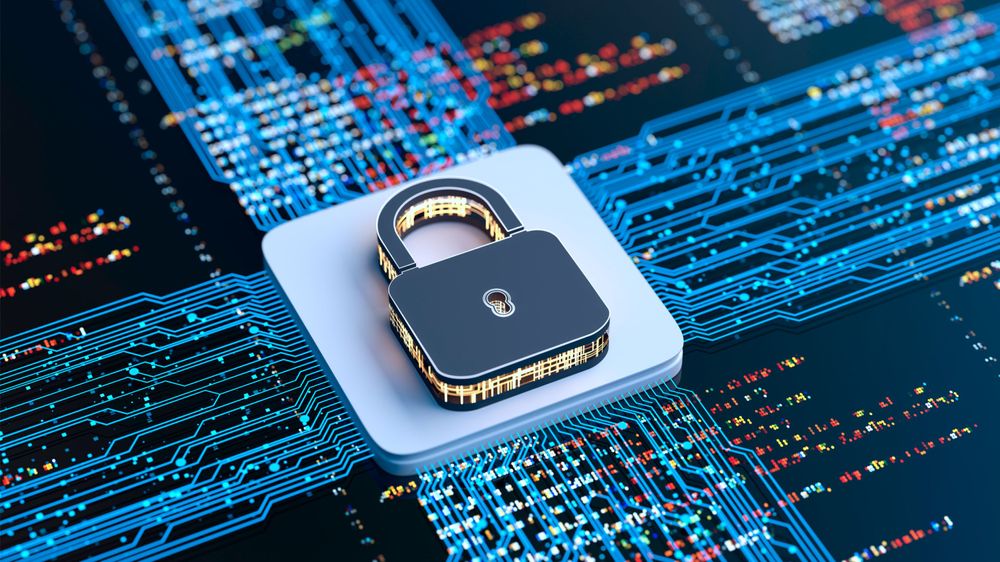
The pervasive nature of digital data means cybersecurity is no longer a niche concern but a critical enabler across all sectors.
A. Finance
The financial industry is a prime target for cybercriminals.
- Fraud Prevention: Advanced AI-driven cybersecurity systems detect and prevent fraudulent transactions in real-time.
- Customer Trust: Robust security measures are paramount for maintaining customer trust in banking, investment, and payment systems.
- Regulatory Compliance: Financial institutions face stringent cybersecurity regulations (e.g., PCI DSS, GLBA) to protect sensitive customer data.
- Market Stability: Protecting financial markets from disruption ensures economic stability.
B. Healthcare
Healthcare organizations hold highly sensitive personal and medical data, making them lucrative targets.
- Patient Privacy: Safeguarding Electronic Health Records (EHR) against breaches to comply with regulations like HIPAA.
- Ransomware Defense: Protecting hospitals and healthcare providers from ransomware attacks that can disrupt patient care and even endanger lives.
- Medical Device Security: Ensuring the security of networked medical devices (e.g., pacemakers, MRI machines) from unauthorized access or manipulation.
- Telehealth Security: Securing virtual consultations and remote patient monitoring.
C. Critical Infrastructure
Utilities, energy grids, water systems, and transportation networks are vital for national functioning and are increasingly vulnerable to cyberattacks.
- Preventing Disruptions: Cybersecurity protects these systems from attacks that could cause widespread blackouts, water shortages, or transportation failures.
- State-Sponsored Attacks: These sectors are often targets of sophisticated nation-state actors seeking to destabilize or gather intelligence.
- Operational Technology (OT) Security: Securing the industrial control systems (ICS) and Supervisory Control and Data Acquisition (SCADA) systems that manage physical processes, distinct from traditional IT security.
D. Government and Defense
Governments face constant cyber threats from espionage, sabotage, and information warfare.
- Protecting Classified Information: Safeguarding national secrets, intelligence, and defense systems.
- Counter-Espionage: Defending against foreign adversaries attempting to steal sensitive data or intellectual property.
- Election Security: Protecting democratic processes from interference through cyber means.
- Cyber Warfare Readiness: Developing capabilities for both defensive and offensive cyber operations.
E. Retail and E-commerce
Online retailers handle vast amounts of customer data and financial transactions.
- Payment Security: Protecting credit card numbers and other payment information (e.g., PCI DSS compliance).
- Customer Data Protection: Safeguarding personal identifiable information (PII) to maintain consumer trust and comply with privacy regulations (e.g., GDPR, CCPA).
- Preventing Website Defacement/Disruption: Ensuring online stores remain operational and trustworthy.
- Supply Chain Security: Protecting the digital aspects of the supply chain from compromise, which could lead to counterfeit goods or delivery disruptions.
Emerging Frontiers and Future Challenges
The cybersecurity landscape is constantly evolving, driven by new technologies and sophisticated threat actors.
A. Artificial Intelligence (AI) in Cybersecurity
AI is both a tool for attackers and a powerful weapon for defenders.
- AI for Defense: AI and ML enhance threat detection (anomaly detection, behavioral analysis), automate incident response, and improve vulnerability management.
- AI for Attack: Attackers use AI to generate more convincing phishing emails, automate reconnaissance, and develop more evasive malware.
- Adversarial AI: Research into how to make AI systems robust against deliberate manipulation by attackers, and how to use AI to find vulnerabilities in other AI systems.
B. Quantum Computing and Post-Quantum Cryptography
The advent of quantum computing poses a long-term threat to current encryption standards.
- Quantum Threat: A sufficiently powerful quantum computer could theoretically break many of the public-key encryption algorithms that secure our internet communications today.
- Post-Quantum Cryptography (PQC): Research and development of new cryptographic algorithms that are resistant to attacks by quantum computers. This is a critical area for future data security.
- Quantum Key Distribution (QKD): Leveraging quantum mechanics to create inherently secure key exchange mechanisms, but currently limited by distance and infrastructure.
C. Internet of Things (IoT) Security
The proliferation of interconnected devices creates new attack surfaces.
- Vast Attack Surface: Millions of smart home devices, industrial sensors, and connected vehicles introduce numerous potential vulnerabilities.
- Patching Challenges: Many IoT devices lack easy patching mechanisms, leaving them vulnerable to exploits.
- Botnet Formation: Insecure IoT devices are often exploited to form massive botnets for DDoS attacks.
- Privacy Concerns: IoT devices often collect sensitive personal data, raising privacy and security risks.
D. Supply Chain Security
Attacks targeting the software supply chain are a growing concern.
- Third-Party Risk: Attackers compromise a trusted vendor or software component, using it as an entry point into multiple organizations (e.g., SolarWinds attack).
- Software Bill of Materials (SBOMs): Efforts to create transparent lists of all components in software products to identify vulnerabilities.
- DevSecOps: Integrating security practices into every stage of the software development lifecycle, from design to deployment.
E. Zero Trust Architecture
A modern security paradigm shifting away from perimeter-based defenses.
- “Never Trust, Always Verify”: Assumes that no user or device, whether inside or outside the network, should be trusted by default.
- Strict Verification: Every access request is rigorously authenticated, authorized, and continuously validated.
- Micro-segmentation: Granular control over network access down to individual applications or workloads.
Conclusion
Cybersecurity Fortifies Data is more than a technical discipline; it’s a collective imperative for navigating our digital future safely and confidently. As our lives become inextricably linked with online platforms and interconnected devices, the imperative to protect sensitive information, ensure operational continuity, and preserve digital trust grows exponentially. The continuous arms race between cyber defenders and attackers demands relentless innovation, proactive strategies, and a pervasive culture of security. While advanced technologies form the bedrock of defense, the human element – through awareness, vigilance, and ethical conduct – remains the ultimate firewall. Investing in robust cybersecurity is not merely a cost; it is an indispensable investment in our collective privacy, economic stability, national security, and the very resilience of the digital world we inhabit. Our ability to thrive in the digital age hinges on our capacity to continually fortify data against every evolving threat.

